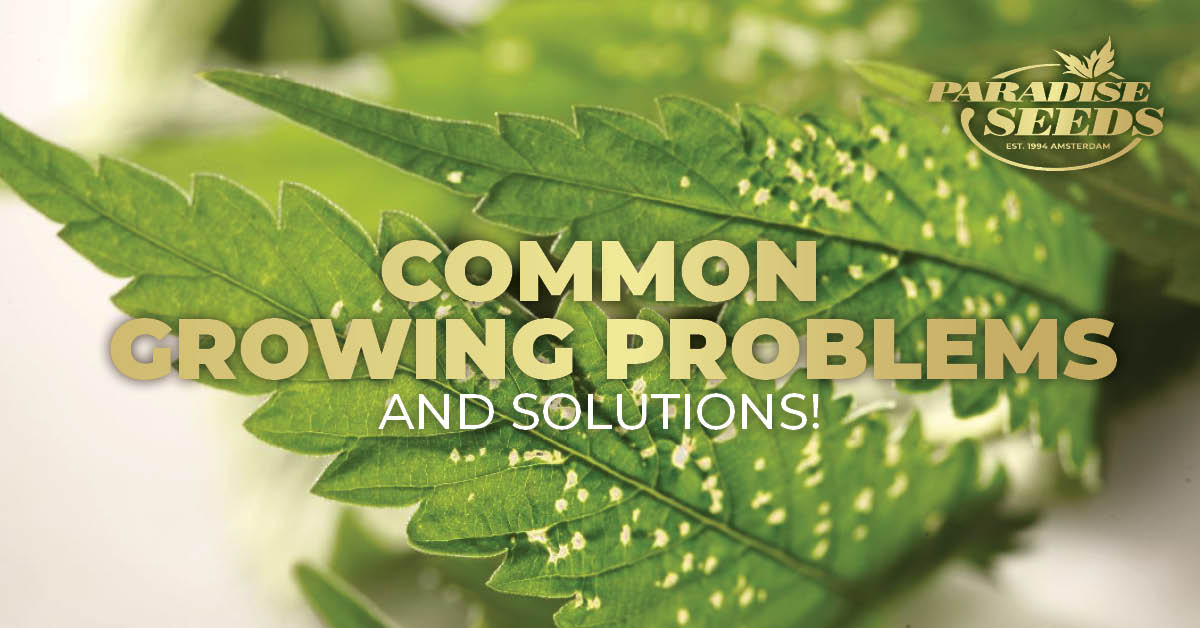It doesn’t matter whether you have green thumbs and fingers or the best kit in your grow room that money can buy, every weed grower will encounter common cannabis growing problems at some stage.
Every cannabis grower who has encountered the following common cannabis cultivation problems will know the sinking feeling which comes with the realization that something is wrong with their plants.
Identifying and treating common cannabis ailments can be a time consuming process. It often requires some detective work to eliminate the possibilities when troubleshooting cannabis growth issues.
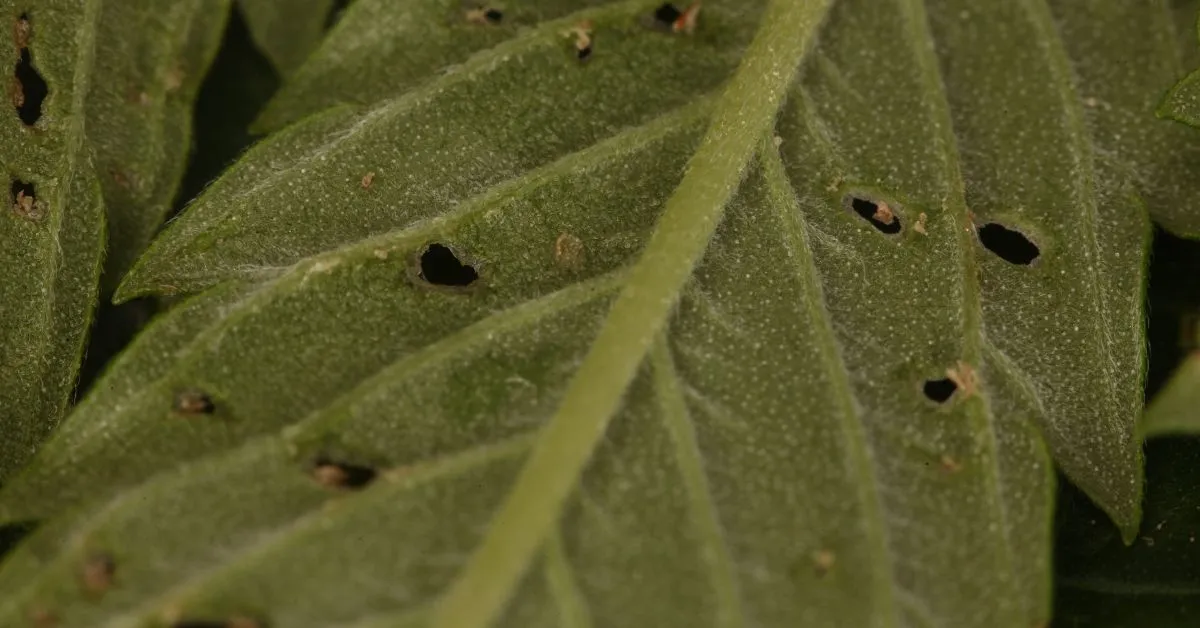
Identifying cannabis growing problems and finding effective solutions is an important part of the learning curve. That’s not to say it’s an enjoyable aspect of growing weed however!
Patience, a methodological approach and taking the time to properly do the research is the best recipe for dealing with cannabis plant issues. And no, you won’t get it right all the time, but you will certainly learn for next time!
So let’s take a look at the most common cannabis growing problems and solutions that can help to get plants back on track to good health. This article has links to the most popular grow advice blogs from the Paradise Seeds archives.
Problems with cannabis seeds and seedlings
For new growers starting out who may be having issues with cannabis seeds and seedlings, we recommend consulting this seed and grow FAQ sheet which will answer many questions about cannabis growing problems relating to seeds. For specific problems growing cannabis seeds, solutions can be found here along with a basic guide to avoiding common growing pot mistakes.
Common Cannabis Growing Problems
Regardless of whether you are growing in an indoor grow room or outdoor space, the most common cannabis growing problems are mostly the same and can be broken down into the following categories:
- Nutrient deficiencies: Nutrient deficiencies occur when the plant does not receive enough of a specific nutrient. This can lead to stunted growth, yellowing of leaves, and poor yield. There are several common nutrient deficiencies that cannabis plants can suffer from, including nitrogen, phosphorus, and potassium deficiencies.
- Cannabis pests and diseases: Pests can quickly ruin a cannabis crop. Obviously outdoor cannabis plants are exposed to more pests, but an indoor crop is more vulnerable to an infestation. Common pests that can affect cannabis plants include slugs and snails, spider mites, thrips, aphids and fungus gnats.
- Watering: Overwatering or underwatering can lead to problems with cannabis plants. Overwatering, one of the common cannabis growing problems for beginners, can cause root rot, while underwatering can lead to nutrient deficiencies and stunted growth.
- Mold and other diseases: Mold and mildew are right at the top of the list of common cannabis growing problems, especially in humid environments.
- Environment related weed cultivation issues: Cannabis plants require specific lighting and temperature conditions to grow properly. Lighting that is too intense or too weak can lead to problems with the plant’s growth and yield. Temperature fluctuations can also affect the plant’s growth and development
Cannabis growing issues due to nutrient deficiencies
In order to achieve big yields cannabis plants need to be supplement with nutrients. The most common are
N-P-K (Nitrogen-Phosphorus-Potassium). There are numerous nutrient products on the market with feeding instructions.
Nutrient deficiencies can affect the growth and development of cannabis plants. Here are some of the common nutrient deficiencies and how to identify them:
Nitrogen Deficiency
Cannabis plants require high levels of nitrogen in the vegetative stage of their growth. Nitrogen levels need to be topped up consistently as it easily washes away.
For this reason, Nitrogen deficiency is one of the most common nutrient deficiencies in cannabis plants. Symptoms include slow growth and yellowing leaves.

Phosphorus Deficiency
Phosphorus deficiency can lead to stunted growth as well as smaller leaves. Leaves can take on a blue/green tone and may be blotchy, while stems and main veins take on a red/purple tinge.

Potassium Deficiency
Potassium deficiency can cause the edges of leaves to turn yellow or brown. The plant may also produce smaller buds than usual.

Calcium deficiency
With calcium deficiency leaves tend to discolor and display curled tips. Eventually they will die and fall off. New growth looks unhealthy, and the entire plant becomes brittle.

Nutrient Lockout
Nutrient lockout is a common problem and often affects beginner growers. The term relates to a state whereby nutrients become locked out of the plant (ie it cannot absorb nutrients). This is usually the result of overfeeding plants with nutrient mixes or pH imbalances.
Diagnosis can be hard because the symptoms are similar to underfed plants, so many novices will make the problem worse by increasing the nutrient feed.

Solutions to nutrient deficiencies:
To diagnose, see what the leaves are doing. Are they discolored or showing blotches? Are they showing other symptoms such as brittleness, curling or falling off the plant?
Use the internet to research potential issues and harness the power of grow forums. If you’ve got a cannabis growing problem, you can be sure someone else has had it before!
To address nutrient deficiencies, it is important to identify the specific nutrient that is lacking and adjust the feeding accordingly.
There are many fertilizer products on the market which will provide essential nutrients as well as natural alternatives.
The best advice is to follow the feeding schedule guidelines – do not over feed as this will create toxicity from oversupplying nutrients.
Weed growing problems due to pests
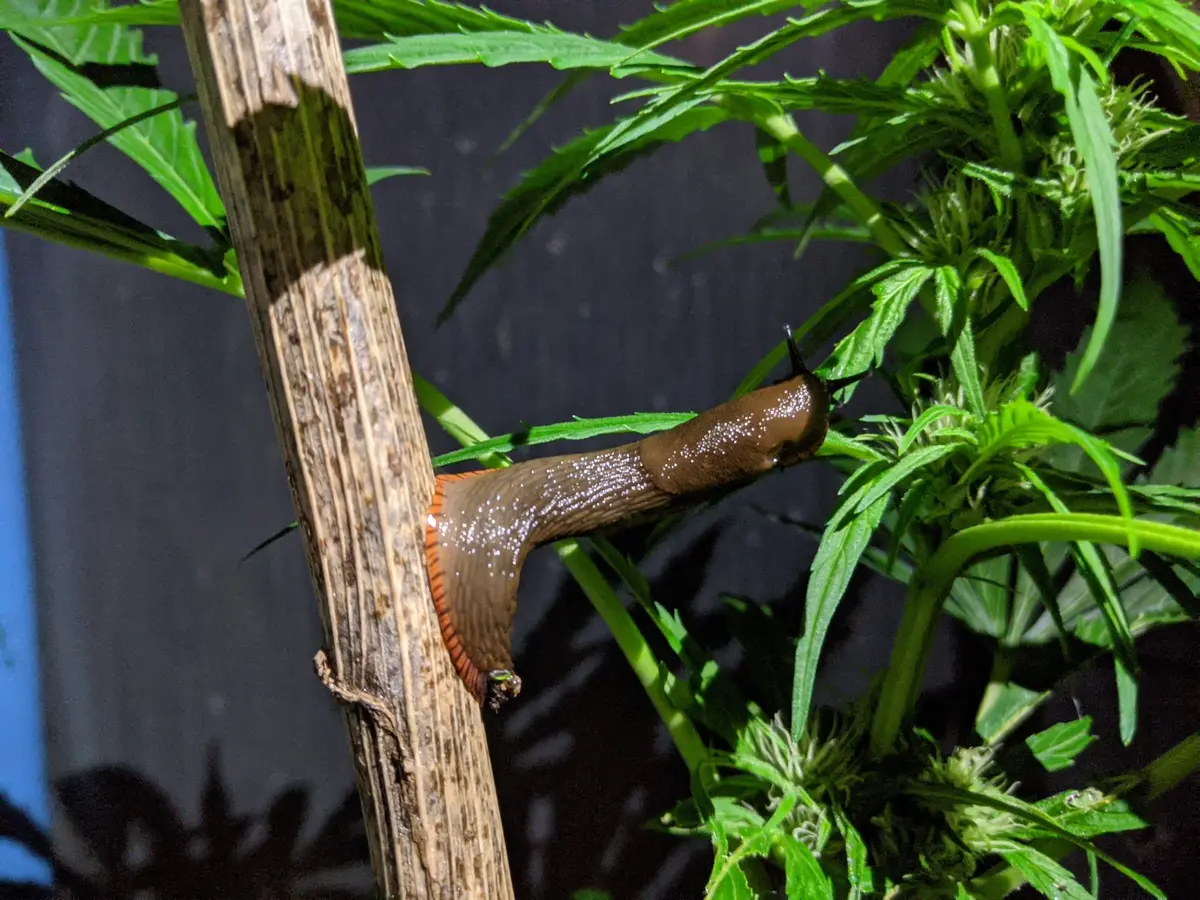
One of the most common cannabis growing problems faced by cultivators is that posed by pests and they come in all shapes and sizes.
If a pest doesn’t eat the plant outright (deer and rabbits are notorious destroyers of outdoor crops), it will weaken the
structure of the plant and may spread disease in the process (insects and slugs and snails).
The result of an out of control pest problem is either no plant or a severely compromised cannabis plant which will lead to sickly growth and low harvest yields.
Common cannabis pests include:
Spider Mites
Spider mites feed on the sap of the plant, causing leaves to yellow and eventually fall off. These pests are tiny so difficult to spot, but tiny webs on your plants are a tell-tale sign of a spider mite infestation.
Aphids
Aphids are small, pear-shaped insects that can be green, black, or brown in color. They feed on the sap of the cannabis plant and can cause leaves to curl and distort. They emit a sticky substance called honeydew, which can attract other pests.
Whiteflies
The tiny Whitefly can be found on the undersides of leaves. They feed on plant sap, causing leaves to yellow and fall off. They also excrete honeydew.
Thrips
Thrips are tiny, thin insects that can be brown or black in color. They feed on the sap of the plant and can cause leaves to become discolored and distorted. They ooze a sticky substance called frass, which can attract other pests.
Fungus Gnats
Fungus gnats are small, black flies that can be seen flying around weed plants. They lay their eggs in the soil, and the larvae feed on the roots of the plant, causing stunted growth and yellowing leaves.
Cannabis growing problems – Pest Solutions
Preventing cannabis pests and diseases
Hygiene is the best solution for common cannabis growing problems arising from pests. This is especially the case in the artificial environment of an indoor grow room.
Indoor pest issues: Most pest issues begin with the pest being hitching a ride into the grow room – infested shoes, clothing and garden tools are the main culprits. Even hands that have been in contact with a household pet may carry eggs or spores.
Contributing solutions to prevent common cannabis growing problems on relation to pest prevention in the grow room include: changing shoes, washing hands and tools, keeping the grow room clean and increasing airflow with the use of fans to prevent pests settling.
Outdoor pest issues: If you are growing in nature, then expect nature’s beasts to take notice of your weed plants. Pests are one of the main outdoor weed growing problems facing growers. An excellent form of prevention is companion planting.
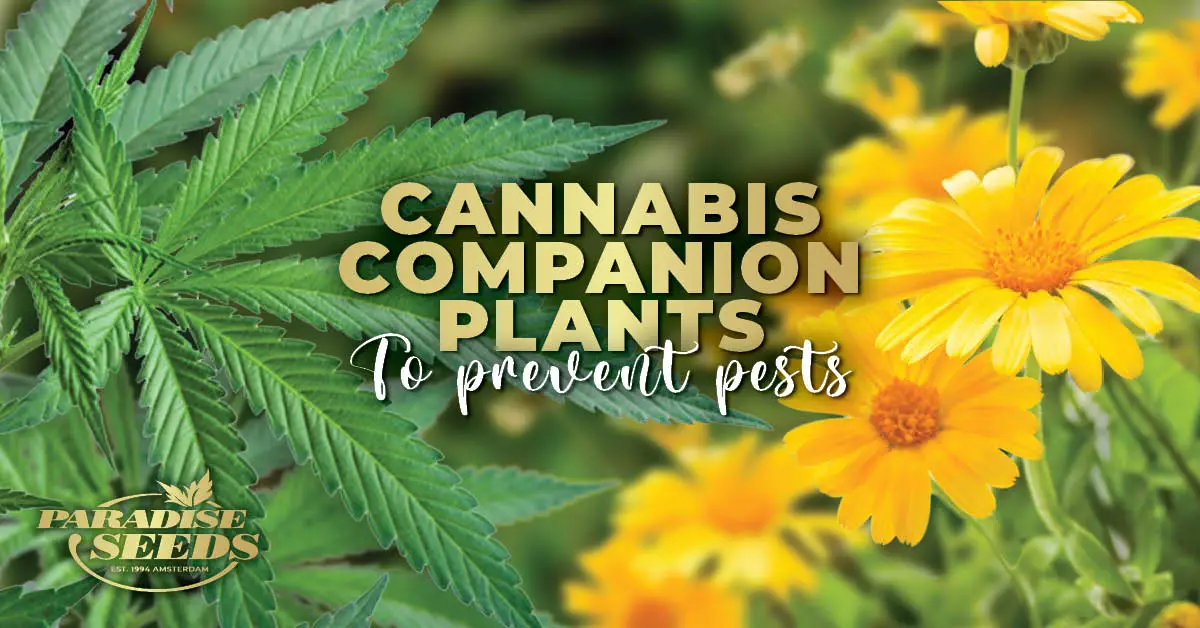
Controlling cannabis pests
If you have one of the pests in the above common cannabis growing problems list then you need to control the pest problem! Fortunately there are solutions available.
For outdoor growers, there are some excellent ways to stop pests and strengthen plants against disease, reactionary tips for biological pest solutions.
Mold and other common cannabis diseases
Bud Mold on cannabis plants
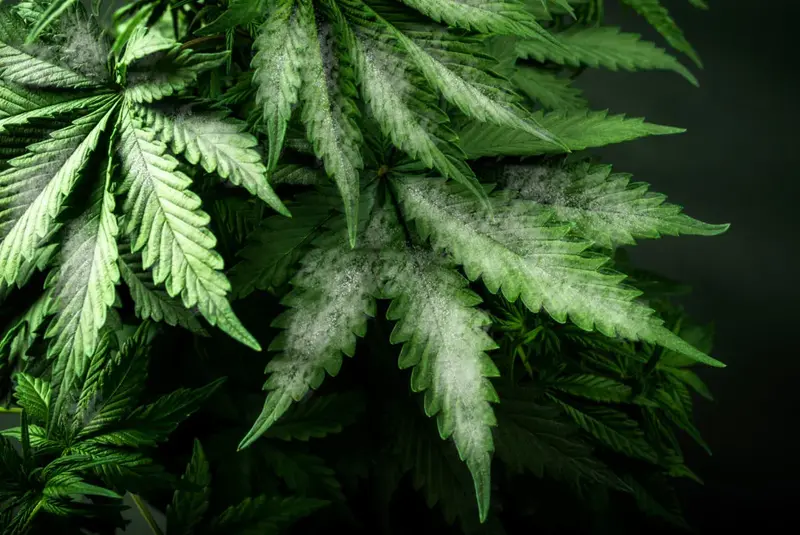
Mold is one of the most feared cannabis growing problems because it moves in stealthily and by the time it is discovered has a grip on the plant. There are two principal mold types, botrytis and powdery mildew.
It is particularly dreaded by growers because the main targets of its spores are buds, often just weeks away from harvest. The grower is left with no choice but to destroy affected buds, and often the whole plant.
Root rot on cannabis plants
This fungal disease affects the roots of cannabis plants and can cause wilting and yellowing of leaves.
Fusarium wilt on cannabis plants
This fungal disease causes yellowing and wilting of leaves, along with stunted growth.
Leaf spot on cannabis plants
This bacterial disease appears as brown or black spots on leaves, eventually causing them to yellow and fall off.
HLVd virus (also known as ‘dudding disease’)
HLVd is becoming increasingly prevalent, especially in infected commercial grows, it’s hard to diagnose, but symptoms include stunted plant growth, reduced trichome/resin levels, smaller buds and leaf malformation.
Solutions to cannabis diseases
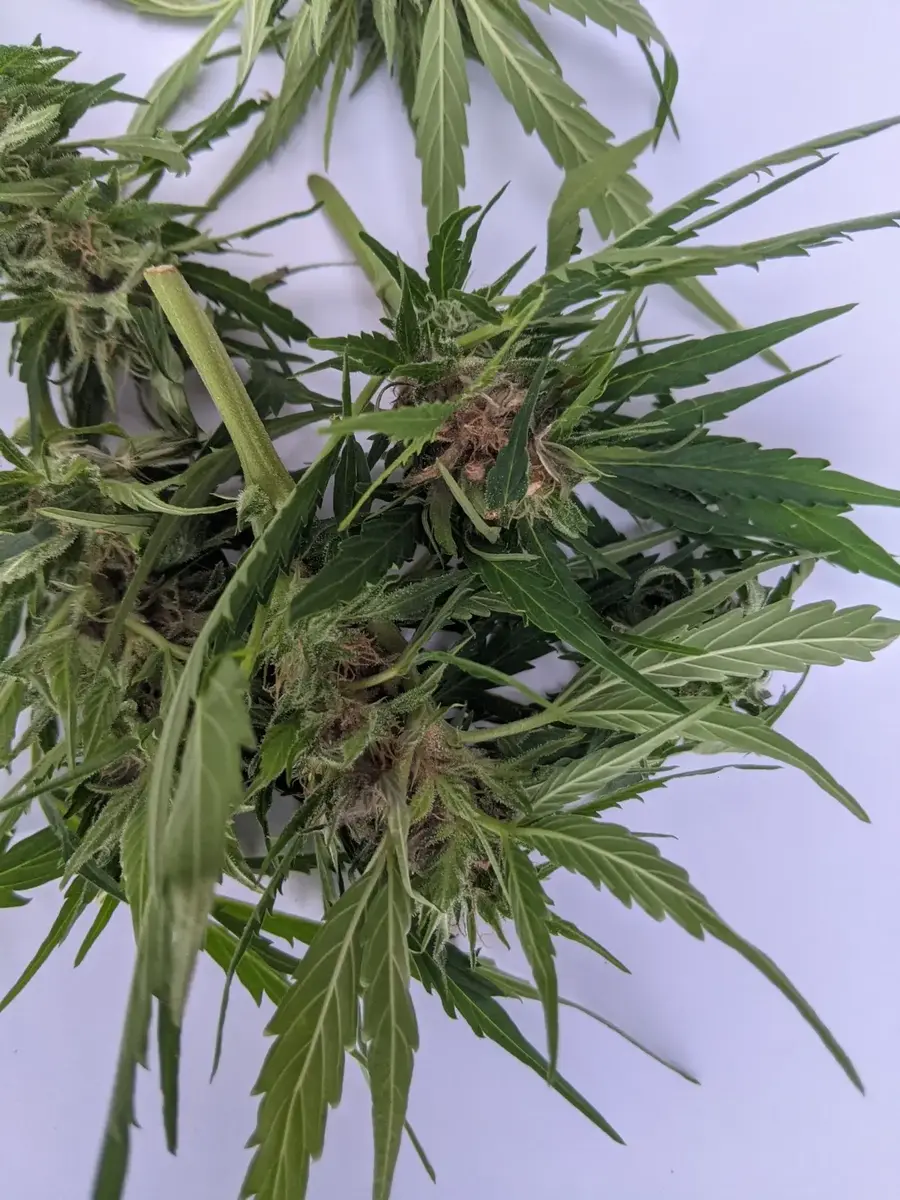
Bud Mold: Fortunately, there is a comprehensive guide available on mold prevention for this stand out issue from the common cannabis growing problems list. If mold is a recurring grow space problem, growers should choose a mold resistant strain to grow.
Root rot/Fusarium wilt: Avoid overwatering to prevent it and make sure soil is well drained. Damaged plants need to be removed and healthy plants may need treating with fungicide.
Leaf spot: To prevent leaf spot, avoid overhead watering and make give plants good air circulation. Infected leaves should be removed and bactericide treatment may be necessary.
HpLVd virus: Cleanliness and growing from seeds rather than clones are the best forms of prevention. Treatments are limited.
Weed growing problems related to water
Overwatering
Overwatering is one of the common cannabis growing problems which affects smaller plants. They are likely to suffer the most because of their underdeveloped root systems.
Overwatering can lead to root rot and nutrient deficiencies.
Overwatering can be a problem in the grow room if it is too humid or there is insufficient ventilation as plants need to transpire water into the air. To prevent overwatering, allow the soil to dry out between waterings. The best advice is to invest in a moisture meter.
Underwatering
Underwatering can lead to stunted growth and nutrient deficiencies. A good rule of thumb is to water the plants when the top inch of soil is dry, but that investment in a moisture meter is the best tip.
Humidity and pH
High humidity in the grow room can be an issue and is especially so in a tropical grow room. High humidity can lead to mold and mildew which are amongst the most common cannabis grow problems.
It is essential that the pH of your water is within the 5.5 – 6.5 range. This is another of the common cannabis growing problems in parts of the world where sudden heavy rains can affect the pH of the water supply.
Environment related weed cultivation issues
Environment related issues are another source of common cannabis growing problems. Inevitably environment brings numerous potential issues for outdoor cannabis growing where the elements and nature’s pests provide an ongoing battle.
The artificial environment of the grow room is also beset by common cannabis growing problems, most often relating to lighting and temperature.
Lighting
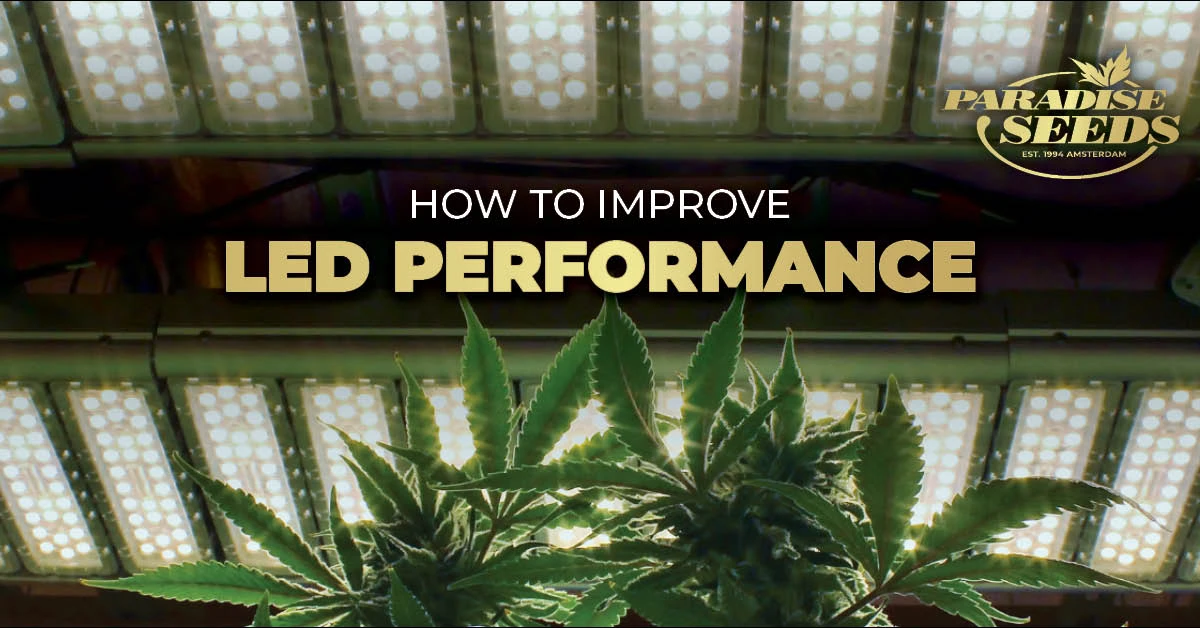
To optimize light levels, growers need to use the right type of lighting (e.g. LED, HPS, or CMH). Ensuring the correct distance between lights and the plants to avoid ‘burn’, and the appropriate light cycle for the plant’s growth stage is essential in heading off indoor set up cannabis growing problems.
Another common problem is the inefficiency of a lighting set up and steps should be made to check lights are running at optimum levels.
Temperature
Heat is a major concern for cannabis growers, as it can cause damage to the plants, limit their growth and sometimes cause plants to turn hermaphrodite. Check out this useful guide to solving heat issues in the grow room, with advice from growers in hot countries.
High temperatures can cause wilting, discoloration, and even death of the plants. Reducing the heat can be achieved through good ventilation, air conditioning, and dehumidification.
Conclusion
Reading this article about the most common cannabis growing problems, it may seem as if there is an issue waiting around every corner of the grow process!
However, the most likely scenario is that in the course of a single grow, cultivators will not be facing an onslaught of nutrient, pest and environmental issues.
It’s important to remember that every growing environment is different and so that challenges faced by one grower in their grow space will not be the same as another.
Facing common cannabis growing problems and taking the time to diagnose and solve them is an important part of the cannabis cultivation journey.
Patience is a key attribute in relation to many common cannabis growing problems, and any measure taken to try and solve problem needs to be well measured.
It’s by resolving common cannabis growing challenges that you build knowledge, avoid them in the future and become a better cannabis grower through the process.


